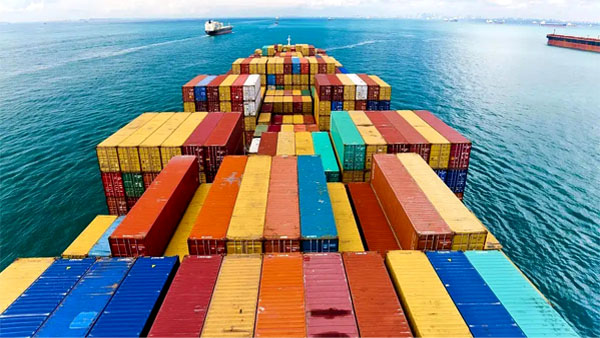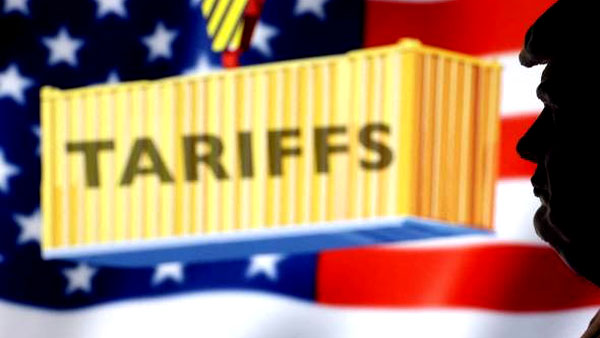By Dipak Kurmi
In an unprecedented escalation of trade hostilities, United States President Donald Trump has imposed an average 50 per cent punitive tariff on Indian goods imports, effective August 27. This decision, a textbook example of aggressive hardball trade tactics, has the potential to sharply alter the contours of India’s external trade. The ramifications are severe — not only because the US is India’s largest single export destination, accounting for approximately 20 per cent of the country’s total exports and nearly 2 per cent of its GDP — but also because this move targets key sectors that underpin millions of jobs and a significant portion of India’s industrial output.
The sheer scale of this tariff increase cannot be understated. Until recently, Indian goods entering the US faced a base import tariff of 25 per cent, itself a sharp climb from the pre-Trump era levels of between zero and 10 per cent. Now, for many sectors, this levy has effectively doubled, creating an insurmountable barrier to price competitiveness in the American market. For Indian exporters, the world’s most lucrative consumer market has suddenly transformed into one of the most hostile battlegrounds.
Curiously, not all sectors have been swept into this punitive net. Exemptions have been carved out for pharmaceuticals, electronics (including smartphones and semiconductors), engineering goods, auto components, and petroleum exports. Together, these unaffected industries account for roughly \$38.49 billion of merchandise bound for the US — about 44 per cent of India’s outbound trade to the American economy. Pharmaceuticals alone, valued at \$10.5 billion annually, represent a lifeline, as do electronics exports worth \$14.6 billion. Engineering goods and auto components add \$9.3 billion, while petroleum shipments contribute \$4.09 billion. For these sectors, the immediate threat may be blunted, but complacency would be a dangerous response, given the political volatility surrounding US trade policy.
The real economic wound is being inflicted on sectors worth approximately \$48.02 billion annually. These industries — agriculture and food processing, textiles and apparel, diamonds and gems, machinery, leather, and chemicals — now face an average 50 per cent tariff. In highly price-sensitive categories, such an increase could spell the end of viability in the US market. The most dramatic casualty could be agriculture and food processing, where India ships \$7 billion worth of produce annually to America. Shrimp, basmati and non-basmati rice, wheat, vegetable extracts, spices, and buffalo meat dominate this trade. Shrimp alone, valued at \$2 billion annually and representing nearly 40 per cent of India’s seafood exports to the US, now faces a crushing 50 per cent levy — up from a mere 7 per cent. Spices worth \$711 million and psyllium husk (isabgol) valued at \$335 million have similarly been targeted.
The textile and apparel sector — employing millions in India’s vast informal and formal manufacturing hubs — is another frontline victim. With \$8.4 billion in annual exports to the US, its survival hinges on competitive pricing. The new duties — 59 per cent on textiles, 63.9 per cent on knitted garments, 60.3 per cent on woven clothes, and 52.9 per cent on carpets — could drive American buyers into the arms of competitors in Vietnam, Bangladesh, or even Central America. In a market where margins are wafer-thin, these figures are not just punitive; they are terminal.

Perhaps most symbolic of India’s export prestige is its diamond, gem, and jewelry trade. Valued at \$10 billion annually in exports to the US, this sector’s artisans and traders have built an international reputation for cutting, polishing, and crafting to the highest standards. A 52.1 per cent tariff will severely erode that advantage. The machinery and mechanical appliances category — worth \$6.7 billion annually and considered a future growth driver for Indian manufacturing — has also been targeted. Pumps, compressors, industrial fans, and electromechanical components now face a 51.3 per cent tariff, positioning them unfavorably against established global leaders such as Germany, South Korea, and Japan.
Leather and footwear exports, totaling over \$2 billion annually, are equally exposed. Countries like Vietnam and Indonesia, which already enjoy lower tariff regimes (often in the 15–20 per cent range), are poised to grab India’s market share. In fact, Trump’s tariff shock does not occur in isolation. Competitors such as Malaysia, the Philippines, Taiwan, Thailand, and Bangladesh — all of which have either free trade agreements or preferential access to the US — will be eager to fill the vacuum left by Indian exporters’ retreat.
India’s vulnerability is further amplified by the absence of a comprehensive Free Trade Agreement (FTA) with the United States. Without such a framework, there is no dispute resolution mechanism to counter unilateral punitive actions of this kind. This lack of institutional protection has left India exposed, making diversification away from the US not merely advisable but imperative.
Economists estimate that even a conservative 20 per cent reduction in exports to the US could knock a full percentage point off India’s GDP growth. For an economy targeting sustained expansion to meet developmental goals, this is a serious setback. And yet, history suggests that moments of external shock have catalyzed transformative reform in India. The food crisis of the 1960s gave birth to the Green Revolution; the balance of payments crisis of 1991 unleashed sweeping liberalisation. Today, the tariff crisis of 2025 could become the crucible for a bold reorientation of India’s trade strategy.
The way forward demands urgency and precision. First and foremost, India must reduce its dependence on a single market. The government should immediately accelerate efforts to penetrate emerging markets in Africa, Latin America, and the Middle East. These regions, with growing consumer bases and infrastructure investment needs, offer fertile ground for export growth in both goods and services. Concurrently, India must fast-track the ratification of the India-UK FTA, which holds particular promise for high-end textiles, machinery, and professional services. Negotiations with Canada, the European Union, and Australia must also be prioritised to build a network of diversified, mutually beneficial trade relationships.
Internally, India’s competitiveness requires reinforcement. Logistics efficiency, infrastructure quality, and compliance simplification are the pillars of export readiness. Special Economic Zones must be reformed to deliver on their promise of streamlined operations and tax advantages. Sector-specific export promotion strategies, underpinned by Production Linked Incentive (PLI) schemes, can boost manufacturing in globally strategic sectors such as electronics, pharmaceuticals, and advanced engineering. Temporary subsidies for distressed sectors, branding support to enhance global perception, and revitalised export financing mechanisms will provide both immediate relief and long-term strength.
Labour-intensive sectors like textiles, apparel, and gems require targeted logistical support — from faster customs clearance to dedicated shipping routes — to preserve their global presence. The Indian government, industry bodies, and exporters must also invest in high-value branding, positioning Indian products not just as cost-effective, but as premium, sustainable, and ethically produced. In an age where consumers care about traceability and environmental impact, this could be a powerful differentiator.
India cannot afford to view the US tariff hike as a passing storm. It is, in truth, a structural warning about the fragility of overreliance on any single market. Just as the Green Revolution transformed India’s agricultural landscape, the present crisis could herald a “Blue Revolution” in trade — one that strengthens maritime logistics, opens new commercial corridors, and entrenches India as a multi-market export powerhouse.
This transition will require political will, industry cooperation, and public support. The tariffs imposed by the Trump administration are undoubtedly punitive, but they also present an inflection point. By embracing diversification, investing in domestic capabilities, and forging robust trade agreements, India can not only weather this storm but emerge with a more resilient, globally competitive export ecosystem.
Old trade habits, like old age in Oliver Wendell Holmes Jr.’s observation, can seem fifteen years distant until they arrive with sudden force. For India’s exporters, that moment is now — and the next steps will define the country’s economic trajectory for decades to come.
(the writer can be reached at dipakkurmiglpltd@gmail.com)




